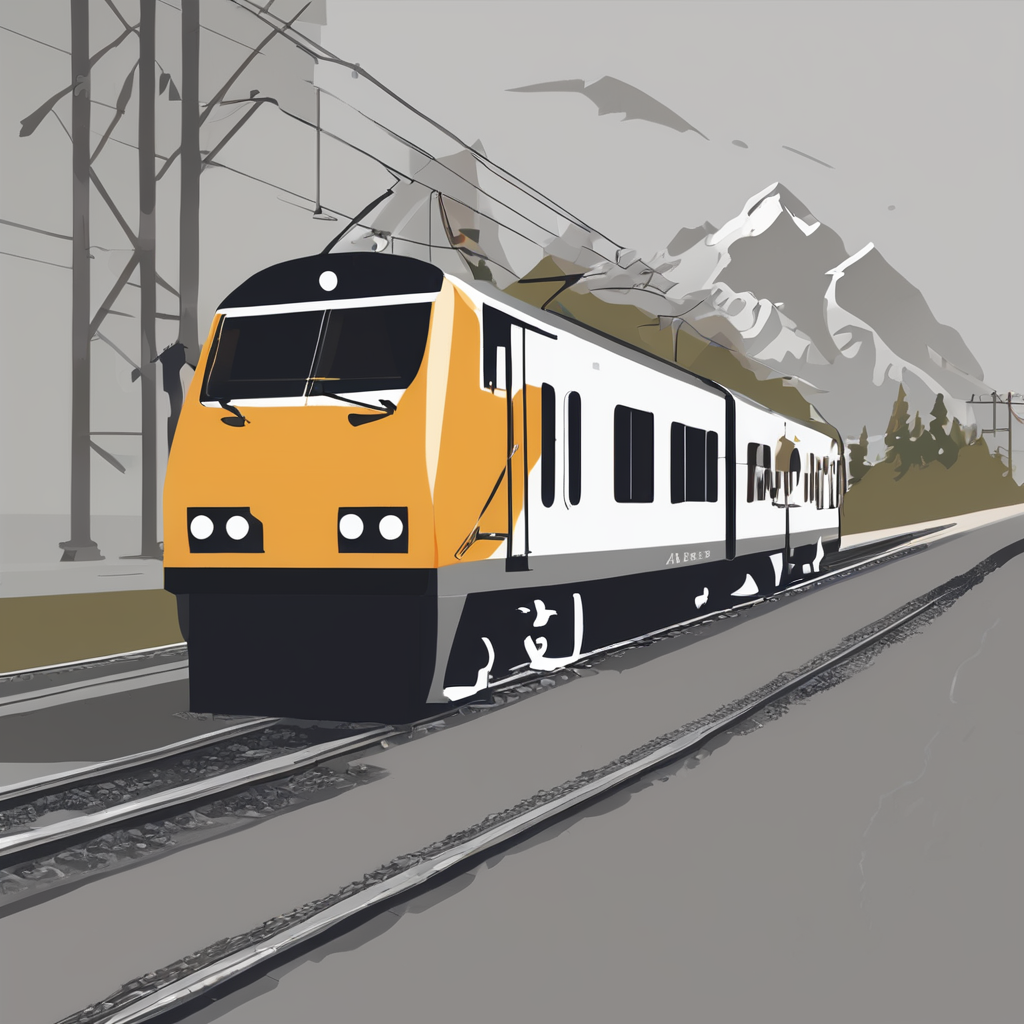Maximize Your Parking Precision: Tips for Ensuring Your Vehicle’s Parking Assist Thrives in Narrow UK Spaces
Understanding the UK Parking Landscape
When it comes to parking in the UK, especially in densely populated areas like London, the challenge is real. Narrow streets, limited parking spaces, and stringent parking regulations can make the experience daunting. However, with the right strategies and an understanding of the parking landscape, you can significantly improve your parking precision.
The State of Parking in the UK
The UK car parks industry is a complex and competitive market. According to market research, the industry is dominated by companies like National Car Parks Ltd, Q-Park Ltd, and APCOA Parking (UK) Ltd, which manage a vast number of car parks across the country[5].
Also read : Maximizing Your Vehicle”s Lane-Keeping Assist: Essential Tips for Safe Driving on UK Roads
In cities like London, the demand for parking is high due to population density and the influx of commuters. This demand, coupled with limited parking facilities, highlights the need for efficient parking management and smart parking solutions.
Optimizing Your Vehicle’s Parking Assist
Modern vehicles often come equipped with advanced parking assist systems designed to make parking easier, even in tight spaces. Here are some tips to ensure your vehicle’s parking assist thrives in narrow UK spaces:
Also to see : Maximizing Lane-Keeping Assist Efficiency: Customizing Vehicle Settings for Rural Roads in the UK
Familiarize Yourself with Your Vehicle’s System
Understanding how your vehicle’s parking assist system works is crucial. Most systems use a combination of sensors and cameras to guide you into parking spaces. Take some time to read your vehicle’s manual or watch tutorials to understand the system’s capabilities and limitations.
Use Parking Management Strategies
Effective parking management can significantly reduce the stress of finding a parking space. Strategies such as reducing on-street time limits, expanding core area boundaries, and implementing shared parking can increase the availability of parking spaces[2].
For instance, in St Albans, a city known for its historic heritage and limited parking, using platforms like YourParkingSpace can help you pre-book parking spaces, ensuring you have a secure and affordable spot near your destination[1].
Design and Layout of Parking Lots
The design and layout of parking lots can greatly impact your parking experience. Here are some key considerations:
- Efficient Utilization: Parking lots should be designed to maximize space usage. This includes using compact parking spaces and efficient circulation lanes[2].
- Clear Signage: Clear signage is essential for guiding drivers to available parking spaces. This reduces confusion and makes the parking process smoother.
- Smart Parking Systems: Incorporating smart parking systems that provide real-time information on available parking spaces can significantly enhance the parking experience.
Best Practices for Parking in Narrow Spaces
Parking in narrow spaces requires a combination of skill, patience, and the right techniques. Here are some best practices to help you navigate these challenging situations:
Align Your Vehicle Properly
Before attempting to park, ensure your vehicle is aligned with the parking space. Use your mirrors and look over your shoulder to get a clear view of the space behind you.
Use Reference Points
Use reference points on your vehicle, such as the center console or the side mirrors, to gauge your distance from the curb and other vehicles.
Take Your Time
Parking in narrow spaces is not a rush job. Take your time, and move slowly. Use your parking assist system to guide you, but also rely on your own judgment.
Commercial Parking Solutions
For commercial parking operators, ensuring an efficient and customer-friendly parking experience is crucial. Here are some strategies that can enhance commercial parking operations:
Implement Advanced Control Systems
Advanced control systems, including automatic number-plate recognition (ANPR) and smart payment systems, can streamline the parking process. These systems provide real-time data on parking space availability and can help manage traffic flow more efficiently[5].
Focus on Customer Experience
The customer experience is paramount in commercial parking. Ensuring that parking spaces are well-lit, secure, and easily accessible can enhance customer satisfaction. For example, parking spaces in Leeds Dock are equipped with CCTV, covered parking, and security lighting, making them a preferred choice for many drivers[3].
Flexible Pricing Models
Flexible pricing models can also improve the parking experience. For instance, offering different pricing tiers based on the duration of stay or providing discounts for long-term parking can attract more customers.
Table: Comparison of Major UK Car Park Operators
| Company | Market Share (%) 2025 | Revenue (£m) 2025 | Key Features |
|---|---|---|---|
| National Car Parks Ltd | 20.57 | 205.7 | Extensive network across the UK, advanced control systems, secure parking |
| Q-Park Ltd | 11.59 | 115.9 | High-quality facilities, easy payment options, real-time parking information |
| APCOA Parking (UK) Ltd | 11.00 | 110.0 | Comprehensive management services, efficient lot designs, customer-centric approach |
Practical Insights and Actionable Advice
Here are some practical insights and actionable advice to help you maximize your parking precision:
Plan Ahead
- Use parking booking platforms to pre-book your parking space, especially in high-demand areas.
- Check for any parking restrictions or events that might affect parking availability.
Use Technology
- Utilize your vehicle’s parking assist system to its full potential.
- Download parking apps that provide real-time information on available parking spaces.
Be Patient
- Parking in narrow spaces requires patience. Take your time and move slowly.
- Use reference points on your vehicle to gauge your distance from other objects.
Quotes from Industry Experts
- “Effective parking management can significantly reduce the number of parking spaces required, providing many economic, social, and environmental benefits.” – Victoria Transport Policy Institute[2]
- “The design and layout of parking lots are critical in maximizing space usage and enhancing the overall parking experience.” – Parking Management Comprehensive Implementation Guide[2]
- “Ensuring that parking spaces are well-lit, secure, and easily accessible is key to enhancing customer satisfaction in commercial parking.” – YourParkingSpace[3]
Parking in narrow UK spaces can be a challenging task, but with the right strategies and an understanding of the parking landscape, you can significantly improve your parking precision. By familiarizing yourself with your vehicle’s parking assist system, using parking management strategies, and adopting best practices for parking in narrow spaces, you can make the parking experience much smoother.
For commercial parking operators, focusing on customer experience, implementing advanced control systems, and offering flexible pricing models can enhance parking operations and attract more customers.
Remember, planning ahead, using technology, and being patient are key to maximizing your parking precision in the UK.
Understanding Parking Assist Technology
Understanding parking assist technology can enhance your driving experience, especially when navigating tight spaces. It taps into modern vehicle systems to facilitate parking, significantly reducing stress for drivers. Here, we explore how these systems work and why they’re essential.
Overview of Parking Assist Technologies
-
Ultrasonic Sensors – Often placed on bumpers, these sensors measure the distance between your vehicle and nearby objects, ensuring accurate parking.
-
Cameras – Providing a visual representation, cameras help you gauge free space. Some advanced setups even offer a 360-degree view.
-
Automated Parking Systems – These take full control over locating a parking spot and steering into it, leaving drivers to manage only acceleration and braking.
Benefits in Narrow Spaces
Navigating narrow parking spaces becomes less daunting with parking assist technology. It allows for precise maneuvering, minimising the risk of accidental scrapes and extending the life of your paintwork.
Key Features in Effective Systems
- High Accuracy – Look for precise sensors and clear camera displays.
- User-Friendly Interface – Instructions should be intuitive and easy to interpret.
- Comprehensive Coverage – A blend of sensors and wide-angle cameras ensure thorough assistance.
These technologies combine functionality and ease, enhancing safety and convenience.
Preparing Your Vehicle for Narrow Parking Spaces
Understanding your vehicle’s dimensions is crucial when navigating tight parking spots. It ensures you can estimate clearance and avoid unnecessary scrapes or dents. Before heading out, take note of the width, length, and height of your vehicle, which will aid in effective space management.
Now, how can you gauge if a space is suitable? First, approach slowly and assess the available space visually. Look for landmarks, such as lines or nearby objects, that can help you judge the space. Another strategy is to practice parking in an empty lot where you can develop a sense of your vehicle’s coverage.
When it comes to vehicle readiness, setting your car up for maximum visibility is a must. Begin by adjusting mirrors to minimize blind spots. Ensure your side mirrors capture the full expanse of the lane next to you. Adjust your seat to maintain a clear view of your surroundings and instrumentation.
Adopting proper visibility practices, along with knowledge of your vehicle’s size, facilitates successful parking even in the tightest spaces. Enhancing these skills ensures you’re always ready to manage limited parking challenges with confidence.
Practical Techniques for Using Parking Assist
Navigating a parking assist system can be straightforward with the right approach. Here’s a step-by-step guide to efficiently use these systems. First, identify and engage the user interface on your dashboard. You’ll typically find this with a designated button that activates the feature. Ensure your vehicle is in the right mode, usually ‘park’ or ‘reverse,’ depending on parking techniques involved.
Being mindful of alerts is crucial. Parking assist systems communicate through various signals, including visual displays and auditory beeps. A sequence of beeps that increase in frequency often indicates proximity to an obstacle. It’s important to stay attentive to these signals to maximize the system’s precision and safety. Misinterpreting these could lead to miscalculations in judging available space.
Manual override is a key safety feature, recommended when you sense the system may not be accurately assessing a tight spot. To manually override, gently take control of the steering wheel while maintaining the system’s guidance aids, allowing for human intuition to enhance the mechanism’s efficiency. Remember, even the most advanced user interfaces might require human intervention for optimal performance. Trust your instincts while utilizing technology to complement your parking skills.
Local Parking Regulations in the UK
Navigating UK parking regulations requires careful attention to local details. Each region may have its unique laws, especially in areas where streets are narrow. Ensuring compliance with these regulations is crucial to avoid fines and other consequences.
Understanding local signs and markings is paramount in adhering to parking laws. In many towns and cities, parking spaces are marked to designate specific restrictions, such as residential permits or time limitations. Pay attention to painted lines and post signs, as they indicate where parking is allowed and what might be off-limits. These markers serve to guide drivers, ensuring the flow of traffic and the safety of pedestrians.
Failure to comply with local parking rules can result in hefty fines or even vehicle towing. Besides financial penalties, non-compliance can lead to points on your driving licence, impacting your insurance premiums and driving record. Comprehending the legal considerations is an essential part of being a responsible driver in the UK.
Always check the regulations in place where you choose to park. This not only protects your vehicle but also ensures a smoother parking experience for you and those around you.
Comparing Parking Assist Systems Across Vehicles
Exploring the parking system comparison among different vehicles, the technology efficiency varies significantly across popular UK car models. Some cars offer advanced sensors that can detect obstacles from various angles, while others still employ basic systems limited to rear-view alerts.
Analysis of Parking Assist Systems
Popular brands like BMW and Audi incorporate cutting-edge technology in their parking assist features. These systems often include cameras and radar-based sensors, which provide comprehensive coverage and high precision, making parking in narrow spaces less stressful. In contrast, more budget-friendly brands might feature simpler ultrasonic sensors that perform well but not with the same level of accuracy.
Pros and Cons for Narrow Spaces
Advanced systems offer significant advantages in tight spaces, thanks to superior obstacle detection. However, these high-tech solutions can be costly and sometimes overly sensitive, leading to unnecessary alerts. On the other hand, simpler parking assist technologies are more affordable but can struggle in crowded environments due to limited detection capabilities.
Vehicle Recommendations
For urban drivers frequently navigating tight parking conditions, vehicles like the Range Rover, with its efficient parking technology, are recommended. Alternatively, for a balance between technology efficiency and cost, Volkswagen models can offer a pragmatic solution.
Enhancing Safety While Parking
Parking can be a stressful task, especially in tight or crowded areas. Maintaining a high level of awareness and applying specific safety tips are essential to accident prevention. Staying vigilant during parking manoeuvres helps avoid potential hazards, such as obstacles and pedestrians, that might not be immediately visible.
One effective strategy is constantly checking mirrors and blind spots while parking. It is easy to rely solely on technology, but building awareness of one’s surroundings is crucial. If your vehicle is equipped with sensors and cameras, these can be excellent tools in enhancing parking safety.
- Sensors emit alerts when the vehicle is near an object, providing an extra layer of security.
- Cameras offer a comprehensive view of areas the mirrors might miss, assisting in clearer parking perspective.
Despite these technological advances, it is important not to compromise the human element of alertness. Constant awareness combined with technology creates a well-rounded form of accident prevention. Ultimately, safety tips like these, when practised consistently, can significantly reduce the risk of parking accidents and contribute to a safer driving experience.
Future Trends in Parking Assist Technology
Parking assist technology is poised for substantial innovation, signaling an exciting trajectory in its development. Recent trends highlight the integration of smart parking solutions with other cutting-edge technologies. These advancements are not only enhancing the efficiency of existing systems but also paving the way for more future technology breakthroughs.
One area of advancement is the potential incorporation of parking assist systems into smart city infrastructure. In the UK, for example, there’s a growing interest in creating seamless, interconnected solutions. This would allow vehicles to communicate with smart grid networks, easing congestion and improving urban traffic flow. This integration is envisioned to transform parking—ushering in a new era of smart parking solutions that minimize the time and stress associated with searching for a spot.
Addressing narrow parking spaces remains a challenge. Yet, advancements like adaptive systems and autonomous valet parking are promising solutions. Future technology could equip vehicles with advanced sensors and AI algorithms, facilitating precise maneuvering even in the tightest spots. These innovations can provide motorists with more confidence and reduce the likelihood of accidents or property damage.










